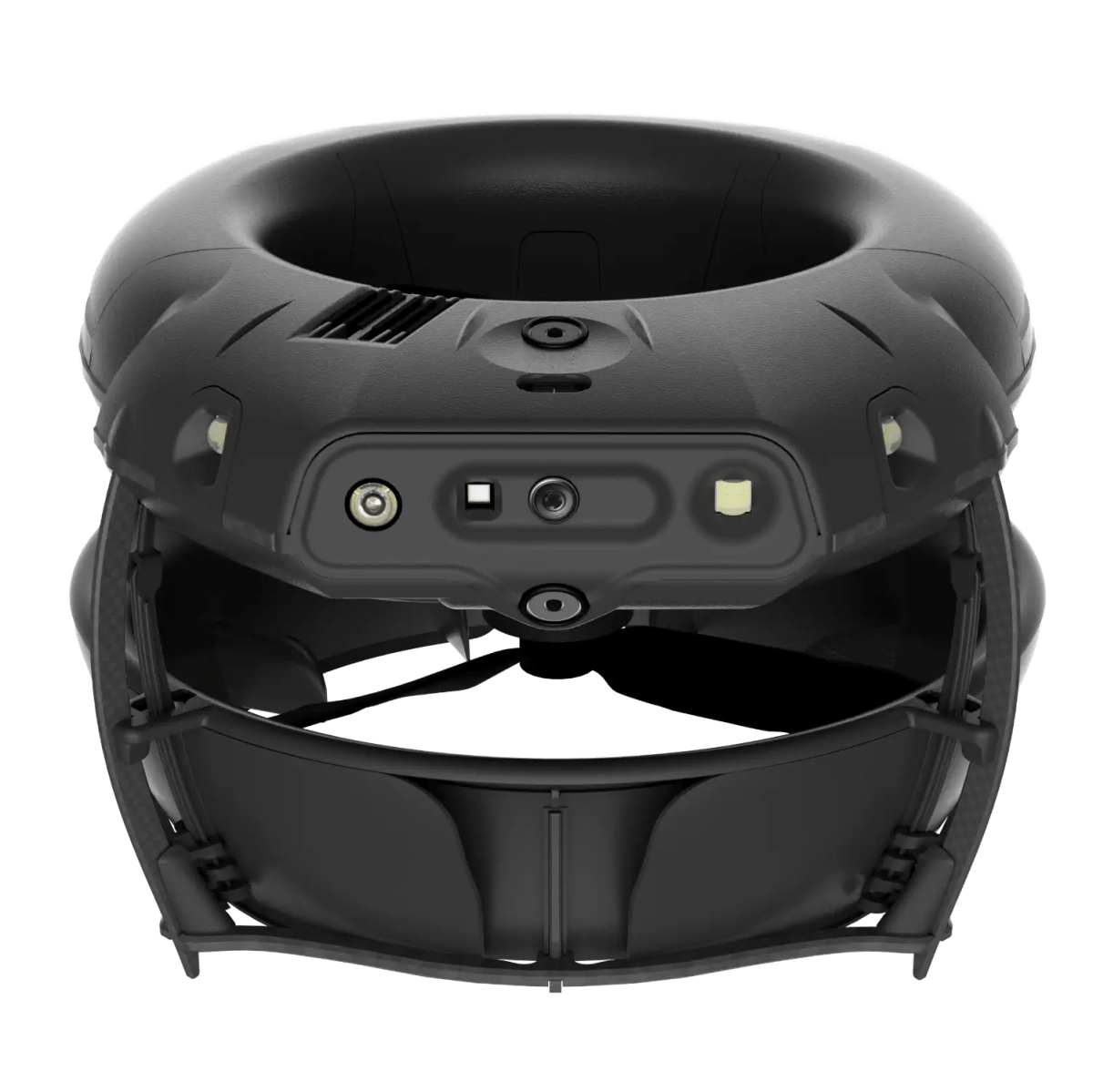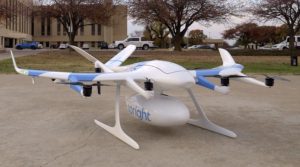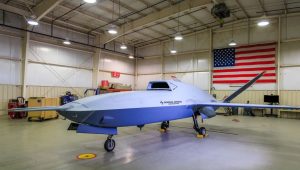Cleo Robotics Dronut DD1: The Revolutionary Drone Delivering Real-Time Intelligence Where Others Can’t Go
In the swiftly changing landscape of robotics and unmanned aerial vehicles, each new release poses the question: What sets this one apart? Cleo Robotics’ Dronut DD1 offers a compelling—and truly disruptive—reply. Specifically designed for challenging environments that defeat conventional drones, the DD1 marks a pivotal advancement in drone intelligence and accessibility.
Why the Dronut DD1 is Captivating the Drone Community
Imagine a drone so compact, secure, and intelligent that it can maneuver through ventilation shafts, navigate around complex machinery, collect data in complete darkness, and maintain its position without relying on GPS. This is not a product of science fiction but rather the Dronut DD1, unveiled by Cleo Robotics in July 2025.
Consider scenarios from your cherished spy thrillers or video games—like Rainbow Six: Siege or Mission Impossible—where miniature drones enter hostile territories, covertly transmitting tactical intelligence. Today, industries, defense, and emergency services can wield the same futuristic edge.
The Human Challenge Addressed by the Dronut DD1
Traditional quadcopters and fixed-wing drones have limitations—they struggle in confined spaces, are prone to damage from impacts, and often require GPS for navigation. These limitations can endanger both equipment and operator safety, particularly in:
- Hazardous confined spaces (such as fuel tanks, silos, or ship holds)
- Industrial inspections (including nuclear plants and chemical refineries)
- Disaster zones (like collapsed buildings or underground infrastructure)
For years, teams have resorted to sending personnel into these areas in cumbersome protective gear, risking exposure to toxic materials or precarious structures. The DD1 shifts this paradigm, making the strategy of “send a robot first” not just feasible but optimal.
Dronut DD1: Technology Deep Dive
Let’s delve into the technology powering this robotic marvel:
| Feature | Dronut DD1 |
|---|---|
| Size (Diameter x Height) | 190 mm (7.5 in) x 115 mm (4.5 in) |
| Weight | 520 grams (18.5 oz) |
| Flight Time | 15 minutes |
| Max Lateral/Vertical Speed | 4 m/s (9 mph) / 2 m/s (4.5 mph) |
| Wind Resistance | 7 m/s (16 mph) |
| Launch Time | < 60 seconds |
| Temperature Range | -20°C to 40°C |
| Camera | 4K Main, 3x Global Shutter, 3D LiDAR |
| Field of View | Up to 162° (cameras), 138° (LiDAR) |
| Control Range | Up to 2.5 km (1.55 mi) |
| Latency | < 250 ms |
| Operating Frequency | 2.4 GHz |
| Controller | 8” Android 14, 1920×1200 touchscreen |
Intelligent Sensor Suite:
The DD1’s primary 4K camera and triple global shutter cameras offer operators extensive and detailed visibility, even under low-light conditions. It employs 3D LiDAR mapping for real-time spatial awareness, essential for navigating tight areas and assessing asset conditions.
Collision Tolerance: The internal design ensures there are no exposed propellers—a significant safety improvement over conventional drones. This feature safeguards components from incidental impacts and allows operation near people and sensitive equipment without risking injury or damage.
Industrial-Grade Durability: The Dronut DD1 is built to withstand dust, debris, bumps, and shocks—an essential trait for demanding industrial environments.
Advanced Autonomy: Fueled by Cleo’s latest AI, the DD1 navigates GPS-denied zones (like tunnels, indoors, or underwater tanks) while maintaining precise position hold, thanks to its sensor fusion and SLAM (Simultaneous Localization and Mapping) capabilities.
Operators can launch the DD1 in under a minute, using an intuitive controller that presents live HD feeds from multiple onboard cameras, making mission planning and execution accessible for novices and veteran pilots alike.
Real-World Applications: Where the Dronut DD1 Excels
Industrial Inspection:
Instead of relying on costly scaffolding or risky confined space entry, inspectors can deploy the DD1 through tanks, silos, refractory tunnels, and pipelines to document corrosion, leaks, or hazards. Its maneuverability facilitates access to hidden areas, reducing downtime and enhancing maintenance quality.
Public Safety & Disaster Response:
First responders utilize the DD1 to search for survivors in collapsed buildings, oversee hazardous environments (chemical spills, fires), or assess structural stability following earthquakes. Its compactness and resilience against collisions permit operation in areas inaccessible to larger drones.
Military & Security:
The defense sector employs the DD1 for reconnaissance within buildings or urban complexes, collecting real-time intelligence before troops enter potentially hostile regions. Its design minimizes detection risk and shields critical components from accidental encounters.
Infrastructure & Preventative Maintenance:
Routine inspections of bridges, tunnels, and subways become quicker and safer. The DD1 gathers visual and 3D spatial data, enabling engineers to detect issues before they become costly or catastrophic.
Case Study: Ensuring Worker Safety in Confined Spaces
A leading energy firm utilized the DD1 to inspect storage tanks previously deemed high-risk for human workers. In a single operation, the drone identified early-stage corrosion undetectable from outside. Maintenance was scheduled ahead of a potentially disastrous leak, saving the company millions and—most importantly—safeguarding workers from potential exposure.
How the DD1 Differs from Traditional Drones
| Dronut DD1 | Traditional Drone | |
|---|---|---|
| Propeller Exposure | None (internalized) | Exposed (prone to damage) |
| GPS Dependency | Operates w/o GPS | Often required |
| Collisions | Collision tolerant | Easily damaged |
| Size | Ultra-compact | Bulky by comparison |
| Hazardous Access | Constructed for confined spaces | Limited by size/prop risk |
| Intelligent Mapping | 3D LiDAR, AI-driven navigation | Basic, less advanced |
This technological leap expands the range of missions—envision drone delivery of sensors into volatile reactors or data collection in sand-laden steel mills—without the usual tension of “will the drone return safely?”
The “Doughnut Drone” Moniker (and Memes)
Let’s discuss the namesake and memes. Dubbed “Dronut” for its doughnut shape, this drone encases its fans and electronics within a carbon-fiber shell, resulting in an aerodynamic, crash-resistant design. It evokes the feel of those sci-fi flying robots in movies (think BB-8 from Star Wars, albeit fully business-focused).
If you witness engineers sharing #DronutSelfie or declaring “Time to see what’s inside the doughnut!” on social media, rest assured—they’re not referring to breakfast.
Expert Tips for Operating the Dronut DD1
- Plan your mission: Draft your inspection checklist and relay points—valuable insights often surface from areas not visible from the entry.
- Capitalize on the 3D data: Transfer LiDAR scans into your maintenance software or digital twins to monitor developments over time.
- Adapt for close-quarters: Even with collision resistance, proficient piloting can extend flight duration and battery life.
- Collaborate with remote experts: Stakeholders can access the DD1’s live video feed from anywhere, making real-time decision-making feasible.
The Cleo Robotics Team: A Human Element
Behind the Dronut is a devoted team of engineers, AI researchers, and field testers, dedicated to keeping humans safe. Their office mantra embodies this commitment: “Let robots handle the dangerous tasks. Humans excel at everything else.”
Cleo’s journey commenced with Dronut X1—the precursor to the DD1—which established benchmarks for collision tolerance. The latest DD1 enhances flight duration, camera coverage, autonomy, and durability—features shaped by direct input from industrial partners and front-line users.
The Future of Dronut: What’s Next?
The DD1 embodies trends in contemporary drone development:
- Heightened autonomy through AI-driven navigation and on-board processing
- Increased safety via intrinsic collision resistance
- Versatility for a wide array of sectors—from infrastructure inspection to defense and public safety
- Adherence to international manufacturing and security standards—designed and produced in the USA, NDAA-compliant
As regulatory demands intensify and industries strive for zero-risk environments, anticipate the Dronut DD1 not just as a product catalog fixture but as a protagonist in user stories across intricate, confined settings.
Final Thoughts: Embrace the Donut
In every domain, the gap between “adequate” and “game-changing” hinges on trust—can you rely on your tools when it matters most? The Cleo Robotics Dronut DD1 transcends being merely an innovative craft; it stands as an ally in safety, efficiency, and real-time decision-making.
Whether an industrial inspector, first responder, or tech aficionado drawn to sci-fi morphing into reality, the Dronut DD1 showcases that the future is circular—and occasionally, the optimal path forward is shaped like a donut.













